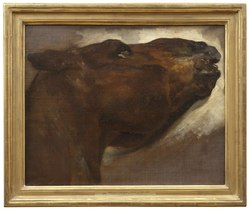
Size of this JPG preview of this TIF file: 714 × 600 pixels. Other resolutions: 286 × 240 pixels | 572 × 480 pixels | 914 × 768 pixels | 1,219 × 1,024 pixels | 2,438 × 2,048 pixels | 3,256 × 2,735 pixels.
Original file (3,256 × 2,735 pixels, file size: 25.51 MB, MIME type: image/tiff)
File history
Click on a date/time to view the file as it appeared at that time.
| Date/Time | Thumbnail | Dimensions | User | Comment | |
|---|---|---|---|---|---|
| current | 18:42, 7 October 2016 |  | 3,256 × 2,735 (25.51 MB) | AndreCostaWMSE-bot | {{Artwork |other_fields_1 = |artist = {{Creator:Théodore Géricault}} |title = {{en|Study of a Dead Horse}} {{sv|Studie av en död häst}} |wikidata = Q18600976 |object_type = painting |de... |
File usage
The following pages on the English Wikipedia use this file (pages on other projects are not listed):
Global file usage
The following other wikis use this file:
- Usage on fr.wikipedia.org
- Usage on sv.wikipedia.org
- Usage on www.wikidata.org





